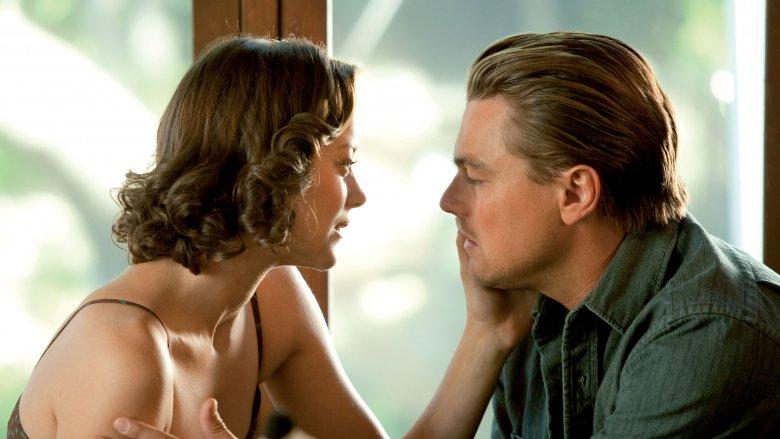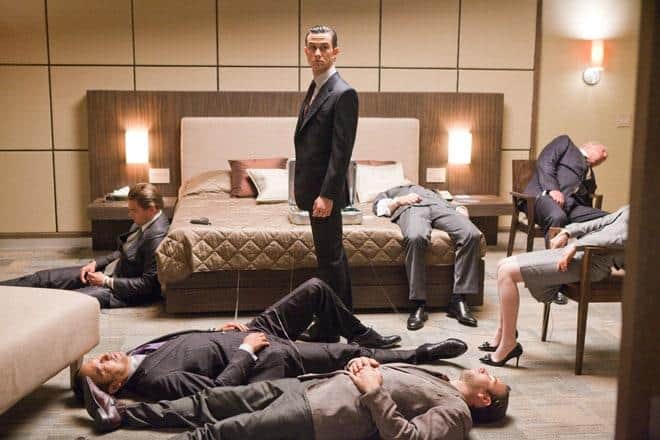I recently rewatched Inception, the blockbuster film directed by Christopher Nolan.
The film takes place in a world where “dream sharing” technology has been developed by the military for training purposes.
By hooking a group of people up to a special device and putting them to sleep at the same time, a team of dream invaders can enter a “subject’s” dream together.

Usually this technology is used to steal secrets – the details of an impending business deal, or valuable trade secrets.
But there is another way to use it. It’s called inception.
Inception is when an idea is placed in someone’s mind through a dream, in such a way that they think it’s their own.
The lead character Dominick Cobb, played by Leonardo Dicaprio, explains why it’s so difficult:
“If you’re going to perform inception, you need imagination. You need the simplest version of the idea – the one that will grow naturally in the subject’s mind. A subtle art.”
Inception is also a risky, dangerous feat. His colleague Arthur, who is more down-to-earth and responsible, doesn’t even believe it’s possible:
“The subject’s mind can always trace the genesis of the idea. True inspiration is impossible to fake.”
In one of the most remarkable scenes in recent film history, Cobb sits at a quaint Paris cafe with Ariadne, an architecture student he’s recruited to design the dream worlds they’ll be inhabiting. He explains how dream-sharing works with a demonstration.
Here’s the complete 4-minute scene on YouTube (the exact quote below starts at 0:57):
Here’s the key dialogue:
COBB: Our dreams feel real while we’re in them. It’s only when we wake we realize things were strange.
ARIADNE: But all the textures of real life – the stone, the fabric… cars… people… your mind can’t create all this.
COBB: It does. Every time you dream. Let me ask you a question: You never remember the beginning of your dreams, do you? You just turn up in the middle of what’s going on.
ARIADNE: I guess.
COBB: So… how did we end up at this restaurant?”
That last question sends chills down my spine every time I watch it.
Think about every idea or inspiration you’ve ever had – where did it come from? Can you pinpoint the exact moment it arrived? Or the exact source? Yet you also have the feeling that it came from somewhere, don’t you?
In dreams, you always get dropped right into the middle of the dream. The beginning feels like it’s there, but you can never quite remember it.
I think the same is true in our own lives. Think about it: How did you end up with this job, or career, or business? How did you end up with this routine, in this house, in this neighborhood? How did you end up with your particular beliefs and interests and goals? How did the very thoughts you’re thinking at this very moment arise?
It’s hard to say exactly, isn’t it?
The story follows Ariadne as she learns the art of dream architecture.
She learns how to create small details that fool the mind into believing the dream is real. How to create pathways that loop back onto themselves so the dreamer never reaches a dead-end. How to place useful objects they will need, like cars and tools, into the dream so they’ll be available later.

This kind of technology may seem like a far-flung fantasy or science fiction, but it is in fact more real than ever. Although we can’t quite hack our dreams yet, we can reengineer almost every other aspect of our waking existence.
With modern technology, we can architect the flows of information we surround ourselves with. We can change the walls and the floors and every detail of our mental environment.
Why would we want to do that? Because creativity is inception.
We need new ideas on a constant basis. We need new information to make sense of our environment, to adapt and respond, and to have breakthroughs in the challenges we face.
Yet these ideas can’t just be given to us. We can’t just search for them on Google or read them in a book. Our mind won’t accept wholesale an idea from the outside. It has to believe the idea is its own.
In the film, the subconscious mind of the subject – a mogul named Fischer – is equipped with “dream defense training.” His mind has been conditioned to protect itself with subconscious projections, which take the form of armed gunmen who attack any outsider.
Our minds also have such self-protective conditioning.
They take the form of doubts – I’m not smart enough, not original enough, not dedicated enough.
They take the form of self-criticism – I’m such a screw up, such a loser.
They take the form of cynicism – the world is out to get me. There’s no use, so why even try?
They take the form of relentless “shoulds” – I should work on that side project, and really ought to start that business I’ve been talking about forever.
Our brain does not want to accept new ideas that challenge what we currently believe. It will warp and twist itself into every kind of shape to avoid it.
Our brain does not want to accept new possibilities for what life could be like. We don’t want to hope, because then we run the risk of being disappointed.
As Mal, Cobb’s ex-wife and subconscious tormenter, says, “You mustn’t be afraid to dream a little bigger, darling.”

In the film as in real life, there is an adventure awaiting for anyone willing to change their minds.
Every time Cobb’s team gets stuck, they have one way forward: go deeper. They create another dream within the dream, descending to an even deeper, more subconscious layer. This gives them more time and more influence, but requires a new level of skill to navigate.

The very same is true in the real world.
In every moment, we have the choice to go deeper. To not accept our reality as given. To shift our attention to a more fundamental layer where we have more influence. As in the film, the ideas we discover there can bubble up to higher levels of consciousness and profoundly shape our future.
We don’t have to accept the reality we are faced with when we wake up each morning. Everything we see around us was decided by someone at some point, which means it’s all subject to change.
Reality is just information. Information flowing in through your senses. Information circulating between different lobes of your brain. Information is something we now have control over. We can collect it, distill it into knowledge and even wisdom, and then deploy what we know toward any goal we desire.
Would you believe that process could be made predictable, reliable, and even enjoyable? Could you imagine if knowledge management was just one more of the countless skills you’ve mastered in your life, like riding a bike or tying your shoes?
True inspiration may be impossible to fake, but it can be cultivated on purpose. We may feel like we’ve been dropped right into the middle of a life that we didn’t choose, but it is still subject to change.
Every change starts with an inception – an encounter with an idea from the outside, that we integrate so deep into our thinking that it becomes our own.
Join the Architects
In a few weeks we kick off the eleventh edition of our online course Building a Second Brain. Enrollment will be open from August 17 to 24, and the course will run for 5 weeks from August 31 to September 30.
My nickname for this cohort is “The Architects.”
Together we will learn the subtle art of idea inception. I will teach you the magic of how to shape the flows of information streaming past you. You’ll join more than 1,000 brilliant people from around the world in mastering the skill of knowledge management.
Knowledge is the master key to the reality we see around us. Like an underlying software code, there is a C.O.D.E. to unlocking the power of knowledge – Capture, Organize, Distill, and Express. These four skills are absolutely critical for navigating a world defined by the abundance of information.
Sign up below to follow the journey of how we are architecting every last detail of the learning environment to maximize the success of our students.
Over the next month, I’ll share with you the main improvements we’ve made, answers to the most frequently asked questions, and some of the results that past graduates have achieved. Plus the complete schedule and invitations to free workshops we’ll be hosting in the coming weeks.
I invite you to become part of the Architects and find out what’s possible when you have the world of ideas at your fingertips.
Tiago
- POSTED IN: Announcements, Building a Second Brain, Education, Marketing
